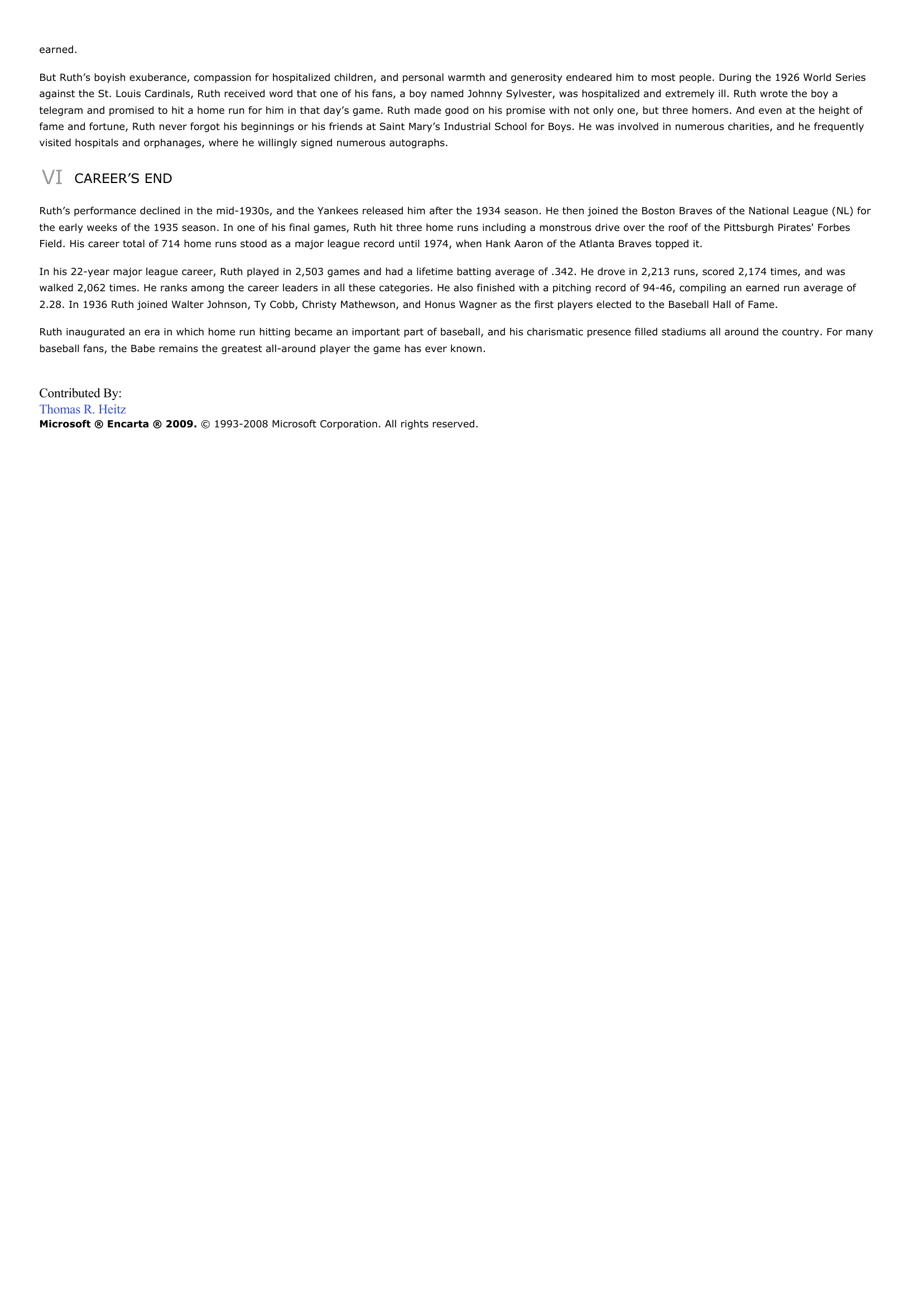Babe Ruth.
Publié le 10/05/2013

Extrait du document
«
earned.
But Ruth’s boyish exuberance, compassion for hospitalized children, and personal warmth and generosity endeared him to most people.
During the 1926 World Seriesagainst the St.
Louis Cardinals, Ruth received word that one of his fans, a boy named Johnny Sylvester, was hospitalized and extremely ill.
Ruth wrote the boy atelegram and promised to hit a home run for him in that day’s game.
Ruth made good on his promise with not only one, but three homers.
And even at the height offame and fortune, Ruth never forgot his beginnings or his friends at Saint Mary’s Industrial School for Boys.
He was involved in numerous charities, and he frequentlyvisited hospitals and orphanages, where he willingly signed numerous autographs.
VI CAREER’S END
Ruth’s performance declined in the mid-1930s, and the Yankees released him after the 1934 season.
He then joined the Boston Braves of the National League (NL) forthe early weeks of the 1935 season.
In one of his final games, Ruth hit three home runs including a monstrous drive over the roof of the Pittsburgh Pirates' ForbesField.
His career total of 714 home runs stood as a major league record until 1974, when Hank Aaron of the Atlanta Braves topped it.
In his 22-year major league career, Ruth played in 2,503 games and had a lifetime batting average of .342.
He drove in 2,213 runs, scored 2,174 times, and waswalked 2,062 times.
He ranks among the career leaders in all these categories.
He also finished with a pitching record of 94-46, compiling an earned run average of2.28.
In 1936 Ruth joined Walter Johnson, Ty Cobb, Christy Mathewson, and Honus Wagner as the first players elected to the Baseball Hall of Fame.
Ruth inaugurated an era in which home run hitting became an important part of baseball, and his charismatic presence filled stadiums all around the country.
For manybaseball fans, the Babe remains the greatest all-around player the game has ever known.
Contributed By:Thomas R.
HeitzMicrosoft ® Encarta ® 2009. © 1993-2008 Microsoft Corporation.
All rights reserved..
»
↓↓↓ APERÇU DU DOCUMENT ↓↓↓
Liens utiles
- Babe Ruth's 60th Home Run.
- Babe Ruth's "Called Shot".
- Hank Aaron Hank Aaron, born in 1934, American baseball player, nicknamed Hammerin' Hank, whose 755 home runs broke the all-time record previously held by Babe Ruth.
- RUTH - « Ancien Testament » (Bible)
- Babe Didrikson Zaharias - Sport.








